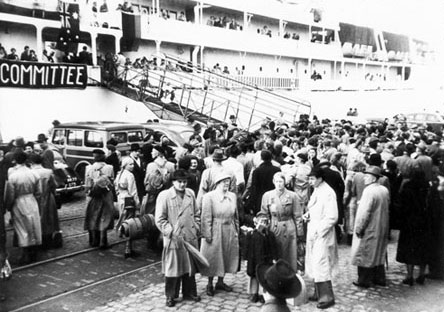Journey to the End of the Earth
Migrants destined to travel to Australia faced not only a long journey, usually by ship, but they were going to a country they knew little about. The displaced people's first encounter with Australian officialdom was in the vast refugee camps scattered across Germany, Austria and Italy, where they were interviewed, assessed, medically examined and finally allocated a berth on a ship. There were numerous checks to go through, for security, employment, health and language skills.
Australia was not generally the first choice of destination for many migrants, simply because not much, if anything, was known about the country. However, despite rigorous security and medical checks, it was often quicker and easier for migrants to find a passage to Australia than to the United States or Canada. So desperate were many of them to leave behind bad memories of wartime Europe and years living in limbo in camps, they took a chance on forging a new life on the other side of the earth.

View Caption
There were two main ports from which migrant ships sailed from Europe with displaced people: Bremerhaven in northern Germany and Naples in Italy. Those in camps in northern Germany sailed from Bremerhaven while those in camps in southern Germany, Austria and Italy were put on a train to Naples.

View Caption
The first ships to take migrants from Europe to Australia were often former cargo or troopships hastily converted for the migrant trade. Between 1947 and 1952, dozens of ships carried displaced people, accommodating them in large segregated cabins or dormitories and offering only basic facilities. When the International Refugee Organisation (IRO) agreement ended in 1952 and the last of the displaced people had emigrated, ships carrying economic migrants tended to be of a higher standard. While the early migrant ships sailing from Europe to Australia were far from luxurious, for many people it was an adventure never to be forgotten. On board the ships there was some attempt to prepare the migrants for their new life in Australia, with English lessons and films.